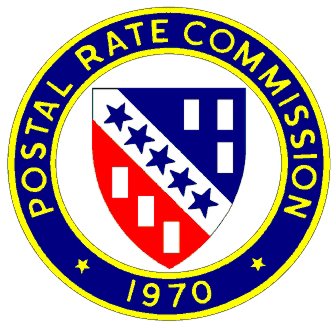January 10, 2018
In 2006, Congress changed the Postal Rate Commission to the Postal Regulatory Commission, in what was hailed as a much-needed broadening of authority for the regulator. The PRC proposal issued on December 1, however, seems to say that it has power over only one thing—rates. And it betrayed an inherent bias to get more money for the Postal Service from customers, above all else.
Aiding postal management and unions with more customer money has been a steady theme in speeches, talks, and interviews by the PRC Chairman, Robert Taub, for quite some time. He made no secret of his belief that fixing the Postal Service balance sheet, stabilizing USPS finances, and bringing it to profitability were his primary goals.
These are noble and important goals, but only if they are sought in a balanced, rational way that works for the long-term. And to throw up your hands, as helpless regarding several other parts of a balanced solution, leads to excessive non-solutions in the area you can control—rates.
The obsession with rates to solve all financial problems (and this came down to one exercise—to fix finances) fell almost necessarily out of the decision to ignore, discount, or declare inability to address the many other solutions that would constitute a balanced approach. These have been widely discussed and were reiterated by many customer comments in the first round of the review. They include:
- Meeting the 2006 prepayment schedule was unnecessary. The Postal Service is well-funded with over $340 billion set aside for retirees. USPS is better pre-funded than the private sector, state governments, the federal government, and the military. The overzealous 2006 pre-funding schedule accounted for 90 percent of the reported USPS losses in the succeeding 10 years, according to the National Association of Letter Carriers.
- The Postal Service funding percentages reflect OPM’s projections of future spending on pension and retiree health care benefits. These projections, however, are highly conservative, meaning that the Postal Service’s pension and retiree health benefit plans are even more richly funded than the OPM-derived figures indicate.
- The Postal Service’s financial statements understate its true financial strength in a second respect: they value the Postal Service’s real estate at depreciated historical cost (also known as “book” cost).
- If the Postal Service genuinely believes that its finances need improvement, there are ample ways to achieve this under current law. Here are a few major options:
- Reduce the employee compensation premium.
- Improve operating efficiency.
- Make better management and pricing decisions (e.g., end FSS).
- Show more creativity and resourcefulness in attracting new revenue.
- Congress also has several ways to improve the Postal Service’s finances through legislation (e.g., invest retirement assets at market returns and integrate retiree health insurance with Medicare).
Annual Compliance Reports (ACR) by the USPS, and responses by the PRC in Annual Compliance Determinations (ACD), have demonstrated the inability of the PRC to regulate the cost side of the equation. So, in the end, customers lose.
An example of the ineffectiveness of 10 years of Annual Compliance Determinations is this admission by USPS in the 2017 ACR, responding to a PRC directive to both increase flats prices above average and reduce their costs:
“However, the Postal Service is unable to provide an estimate of the financial impacts of these operational initiatives at this time. As the Postal Service explained in its responses to the Commission’s directive in Chapter 6 of its FY 2015 ACD, and in last year’s ACR, the information generated by the Postal Service’s existing data systems does not support reliable estimates of the impact of operational initiatives on flats costs.”
So, the Postal Service can’t show how their efforts are saving costs, but the PRC wants to give them above-inflation price increases anyway. Make the customers pay.
The PRC can regulate price increases. And that’s what it proposes in the December 1 filing. Adding as much as 3 to 5 percentage points to inflation in all future postage increases to bring the finances to profitability without any of the other much-needed improvements. That’s why perhaps it should go back to being called the Postal Rate Commission.



Leave a Reply